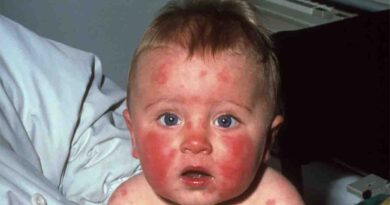Breast Cancer: Causes, Symptoms, Diagnosis, and Treatment
Breast cancer is a topic of immense significance and concern in the realm of women’s health. It affects thousands of women and their families worldwide and has a profound impact on the lives of those it touches. In this comprehensive article, we will delve into the complexities of breast cancer, covering its causes, symptoms, diagnosis, treatment options, and the importance of early detection.
What is Breast Cancer?
Breast cancer is a malignant tumor that forms in the cells of the breast. It can occur in both men and women, but it is far more common in women. This cancer typically begins in the milk-producing glands (lobules) or the ducts that transport milk from the lobules to the nipple. Understanding the basics of breast cancer is the first step towards raising awareness and promoting early detection.
Types of Breast Cancer
Breast cancer is not a single disease but rather a group of diseases that differ in their characteristics and behavior. The most common types of breast cancer include:
- Ductal Carcinoma In Situ (DCIS): A non-invasive cancer where abnormal cells are found in the lining of a breast duct.
- Invasive Ductal Carcinoma (IDC): The most common type of breast cancer, characterized by the cancer cells breaking through the duct wall into nearby tissues.
- Invasive Lobular Carcinoma (ILC): Begins in the milk-producing glands and can spread to other parts of the body.
- Triple-Negative Breast Cancer: A type of cancer that lacks estrogen receptors, progesterone receptors, and HER2 receptors, making it more challenging to treat.
Risk Factors
Understanding the risk factors associated with breast cancer is crucial for prevention and early detection. While some risk factors are beyond our control, others can be managed. Common risk factors include:
- Gender: Women are at a higher risk than men.
- Age: Risk increases with age, particularly after 50.
- Family History: A family history of breast cancer can increase the risk.
- Genetics: Certain genetic mutations, such as BRCA1 and BRCA2, can predispose individuals to breast cancer.
- Hormone Replacement Therapy (HRT): Long-term use of HRT may increase the risk.
Signs and Symptoms
Early Warning Signs
Recognizing the early warning signs of breast cancer can be a life-saving endeavor. The most common symptoms include:
- Lump in the breast or underarm: A painless lump is often the first noticeable symptom.
- Change in breast size or shape: Swelling, dimpling, or puckering of the breast can indicate a problem.
- Nipple discharge: Bloody or clear discharge from the nipple can be a cause for concern.
- Changes in skin texture: Redness, rash, or skin that resembles an orange peel can be a sign.
- Breast or nipple pain: While not always a sign of cancer, it should be evaluated if persistent.
Importance of Self-Examination
Regular self-breast examinations are a simple yet effective way to detect breast cancer in its early stages. Women are encouraged to perform these examinations monthly, ideally a few days after their menstrual cycle when the breasts are less tender.
Mammograms and Screening
Mammography is an essential screening tool for detecting breast cancer in its early, most treatable stages. It involves using low-dose X-rays to create images of the breast tissue. Women should discuss the frequency and timing of mammograms with their healthcare providers, as recommendations may vary depending on individual risk factors.
Diagnosis
Clinical Examination
A clinical breast examination by a healthcare provider is often the first step in diagnosing breast cancer. During this examination, the healthcare provider will assess the breasts for lumps, changes in shape, or skin abnormalities.
Imaging Tests
In addition to mammography, other imaging tests may be used for further evaluation. These tests include:
- Ultrasound: Uses sound waves to create images of the breast tissue, helping to determine whether a lump is solid or filled with fluid.
- MRI (Magnetic Resonance Imaging): Provides detailed images of the breast, especially useful in cases where mammography and ultrasound results are inconclusive.
Biopsy
A biopsy is the definitive method for confirming whether a breast abnormality is cancerous. During a biopsy, a small sample of tissue is removed and examined under a microscope. Types of breast biopsies include:
- Needle Biopsy: A thin needle is used to extract tissue or fluid from the breast.
- Surgical Biopsy: A larger piece of tissue is removed during a surgical procedure.
Staging and Prognosis
Staging
Breast cancer is categorized into stages to determine its extent and spread. The stages range from 0 to IV, with 0 indicating non-invasive cancer and IV indicating advanced cancer that has spread to other parts of the body.
Prognosis
A patient’s prognosis depends on various factors, including the stage of cancer, type of breast cancer, and treatment options. Advances in early detection and treatment have significantly improved survival rates for breast cancer patients.
Treatment Options
Surgery
Surgery is often the initial treatment for breast cancer and may involve:
- Lumpectomy: Removal of the tumor and a small margin of surrounding tissue.
- Mastectomy: Removal of the entire breast.
- Sentinel Lymph Node Biopsy: Evaluation of nearby lymph nodes to determine if cancer has spread.
Radiation Therapy
Radiation therapy uses high-energy X-rays to target and kill cancer cells. It is often used after surgery to reduce the risk of cancer recurrence.
Chemotherapy
Chemotherapy involves the use of drugs to destroy cancer cells. It can be administered before or after surgery, depending on the stage and type of cancer.
Hormone Therapy
Hormone therapy is used for hormone receptor-positive breast cancers. It blocks the effects of hormones on cancer cells, slowing their growth.
Targeted Therapy
Targeted therapy targets specific molecules involved in cancer growth and progression. It is used for certain types of breast cancer, such as HER2-positive breast cancer.
Coping with Breast Cancer
Emotional Support
A breast cancer diagnosis can be emotionally overwhelming. Seeking support from friends, family, and support groups can help patients cope with the emotional challenges.
Lifestyle and Survivorship
Maintaining a healthy lifestyle through proper nutrition, regular exercise, and stress management can improve the overall well-being of breast cancer survivors.
Prevention and Early Detection
Breast Self-Examination
Regular breast self-examinations are essential for early detection. Women should be familiar with the normal look and feel of their breasts to identify any changes promptly.
Clinical Breast Examinations
Regular clinical breast examinations by healthcare providers are recommended to identify any abnormalities that may require further evaluation.
Mammography Screening
Following recommended mammography screening guidelines based on age and risk factors is crucial for early detection.
Breast cancer is a formidable adversary, but with early detection, advanced treatment options, and ongoing research, the outlook for patients continues to improve. It is imperative that individuals and communities come together to raise awareness, support research efforts, and provide a network of care for those affected by this disease. Together, we can work towards a future where breast cancer is not just treatable but preventable, ensuring the health and well-being of women worldwide.
References
- American Cancer Society, Pregnancy After Breast Cancer Opens a new window, January 2022.
- WhatToExpect.com, Breast Cancer During Pregnancy, February 2021.
- BreastCancer.org, Breastfeeding, Pregnancy Seem to Improve Breast Cancer Survival, September 2016.
- Living Beyond Breast Cancer, Breastfeeding After Treatment for Early-Stage Breast Cancer, October 2016.




